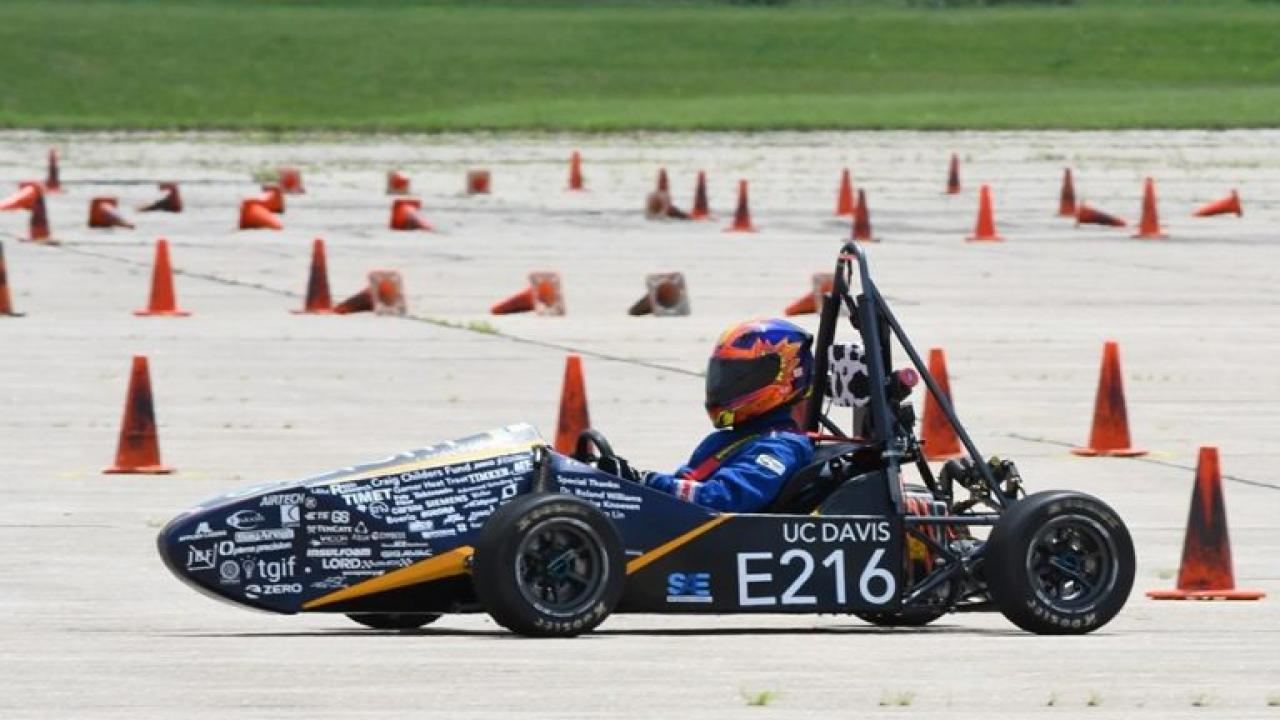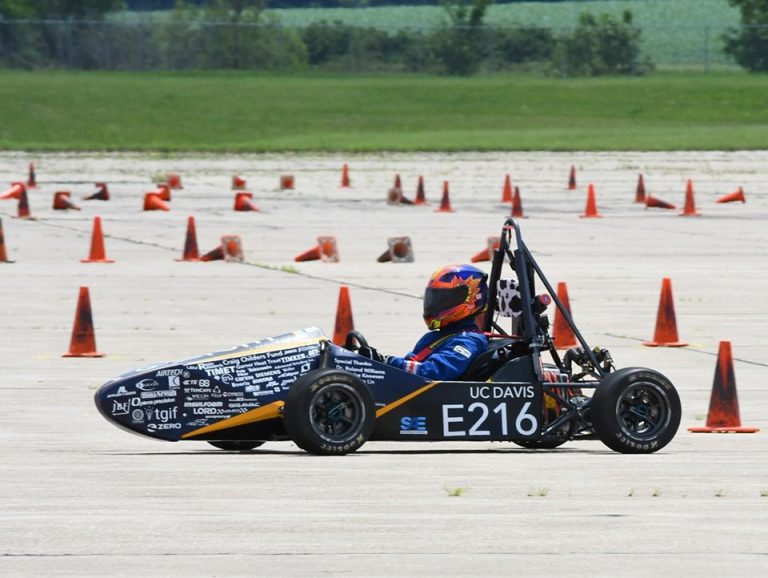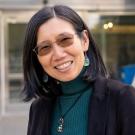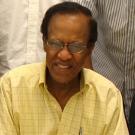
Undergraduate Electrical and Computer Engineering Senior Design Project Courses Foster Invention
Quick Summary
- UC Davis' ECE department offers undergraduate senior project-based design courses.
- Student teams invent, build and demonstrate new devices each year.
UC Davis’ electrical and computer engineering (ECE) department offers a wide-range of project-based design courses for undergraduate seniors.
Each of these courses involves an independent open-ended design experience where students work in teams of three or more on a multidisciplinary project. Each group presents their designs for review and gives a final report. Topics for the courses include applied machine learning, the Internet of Things, analog circuits, digital systems, microwaves, THz, and light waves, among other areas of electrical and computer engineering.

ECE professor Chen-Nee Chuah’s course focuses on applied machine learning and deep learning, especially as applied to self-driving cars and smart health applications. The introductory lectures and labs explore sensor fusion, feature extraction and engineering, computer vision (segmentation and object detection) and learning-based decision control.
Projects they’ve worked on include a brain-machine interface and a deep-learning based algorithm to detect uveitis, eye inflammation, from non-invasive optical coherence tomography (OCT) scans. The former project aims to read mind from a home-built Electroencephalogram (EEG) device. The latter project offers the promise of making less invasive, safer, and more comfortable tests for eye problems that could lead to blindness accurate enough for clinicians to use with patients. The team that put together the uveitis detection algorithm was chosen as a finalist in the 2021 Sandia Design Competition and the team leader, Luca, is now in UC Davis’ engineering master’s program.
Chuah’s courses are designed to expose students to real-life engineering problems and challenges and facilitate more open-ended research. They put the code they write up on GitHub so that it’s open source and available for further development.
Avesta Sasan, ECE associate professor, teaches a class around the Internet of Things (IoT), where students start off with lectures and labs that explore the characteristics and design space of the IoT. The course looks into the processing, sensing, and communication technologies used to build ‘smart’ objects connected to the Internet. It’s designed to give students a chance to see what sorts of tools can be created and what types of problems can be solved using the methodology of the IoT.
Later on, the students in Sasan’s course work in groups to build senior design projects with microcontrollers and analog/digital sensors, Bluetooth and cloud services. Some past projects from recent classes include a smart door that could remember users’ faces and voices and regulate access, a smart flowerpot that could identify a plant and its water and sunlight requirements, and a smart home system that could monitor and adjust blinds and vents to maintain levels of light and fresh air.
Also, ECE professor Bevan Baas offers a course focused on digital design. Here students design and implement a hardware solution that “includes many of the key components and design experiences that are part of a complete industrial product design.” Students in Baas’ course implement their final projects with commercial-grade FPGA computer-aided design tools. The course is designed to draw upon the disciplines of algorithms, software engineering, computer architecture, digital system design and digital system testing. As with Sasan’s course, the students work in groups and give a final demonstration and presentation of what they have built.
Another exciting offering, ECE 195, with professor Lance Halstead, coaches students on autonomous vehicle design and provides them with a chance to work in teams to build self-driving remote control cars. They can race these cars over a preset course in the California NATCAR competition, sponsored by National Semiconductor. Student teams coming out of this course have been the top winners in the past years’ competitions.
ECE professor Richard Branner teaches a senior design course that’s focused on microwave circuit design. And, professor Rajeevan Amirtharjah offers an electronics design course in which students have built robotic arms, e-tricycles for senior mobility, a LED light plant growth monitoring system, and a solar-powered rover used with middle schoolers at the Museum of Science and Curiosity.
Other projects students have built in ECE senior design courses include a National Ignition Facility Inspection Robot, a Formula SAE car subsystems redesign, an automated THz spectroscopy system, and ultrawideband antenna design and development.
Each of these courses allow students to practice communication and presentation skills, as they prepare oral and written reports about their final projects at the end of the quarter. They give a demo of their project to the class and explain what makes their project unique and useful, what challenges they faced while building it, and what they might do differently if they were to create the same project again.
The goal is to prepare students for the interpersonal interaction and comprehensive design thinking that will be involved with working in industry. Also, to excite them about the many possibilities for creative and inspiring engineering projects using recently developed technology.






